Abstract
The degree of non-neoplastic host-cell infiltration was assessed in 3 in vivo-in vitro tumour models commonly used in radiobiological studies: EMT6/Ro mammary carcinoma, 9L/Ro tumour and KHT sarcoma. While the 2 former tumour models have been shown to be moderately to highly immunogenic when grown s.c., the KHT sarcoma is apparently non-immunogenic. Using differential staining on single-cell suspensions from enzymatically dissociated solid tumours, all 3 tumour types were found to contain large proportions (30-60%) of non-neoplastic host cells. The actual host-cell component found in the cell suspensions differed both in type and percentage for the 3 tumours studied. These host and neoplastic cells in the cell suspensions prepared from the solid tumours could be readily separated by centrifugal elutriation. After separation the clonogenic potential of the neoplastic cells was assessed, and was found to be higher than the clonogenic capacity of the unseparated cell suspension by a factor directly related to the host/neoplastic cell ratio. Even after the removal of the host cells, the clonogenic capacities of the neoplastic EMT6 and 9L tumour cells were lower than that of the corresponding in vitro sublines (approximately 30 vs 75%). However, in the KHT sarcoma the removal of the host cell component raised the plating efficiency to approximately 60%, which was similar to the value for the in vitro cell subline of this tumour.
Full text
PDF
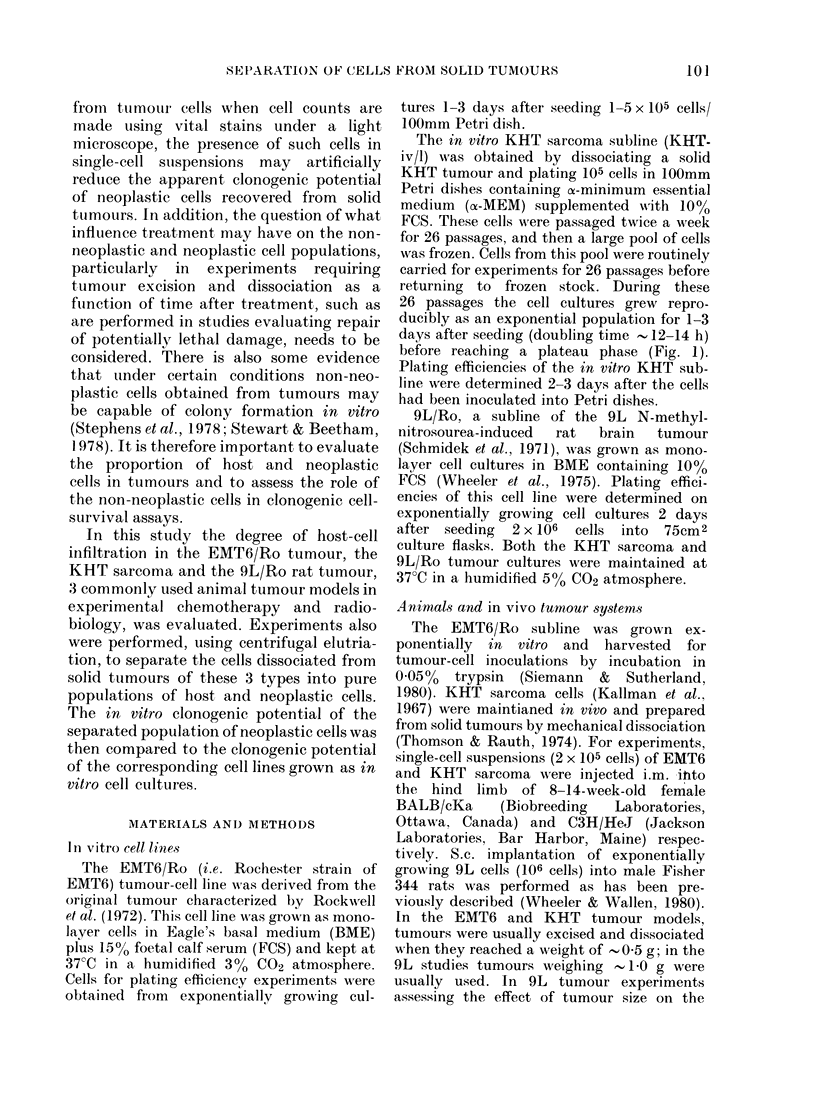
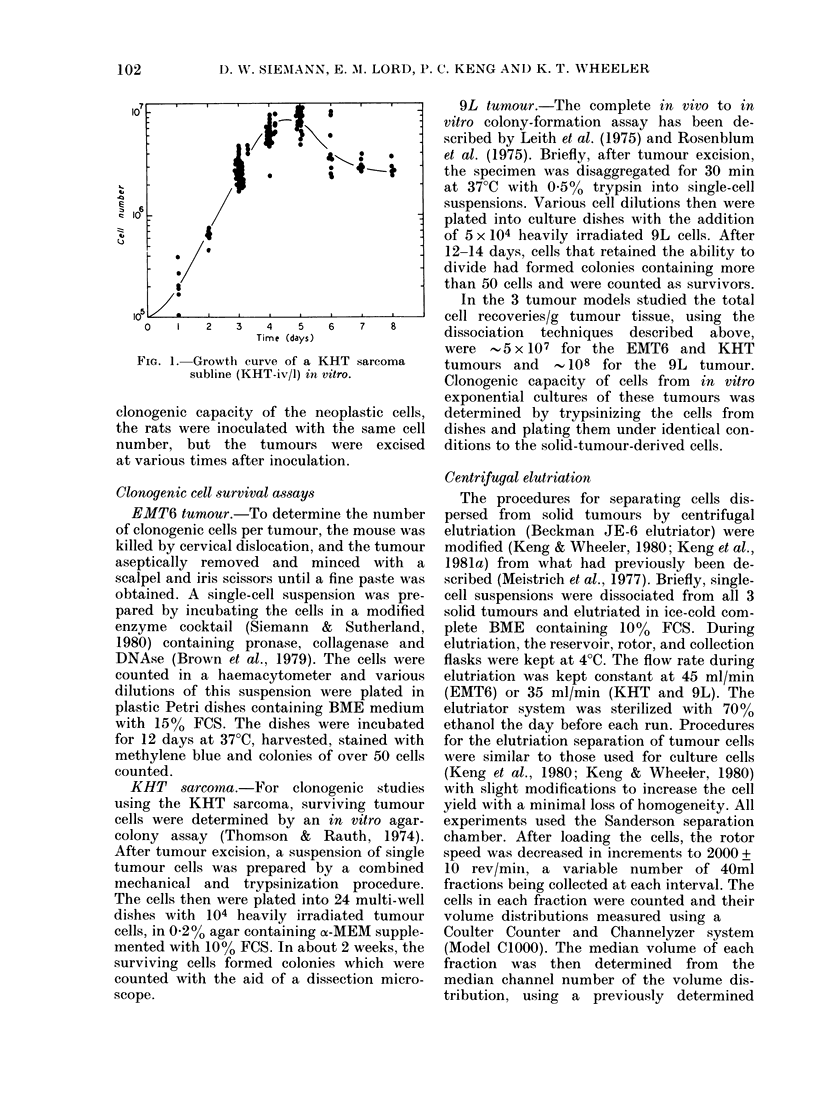
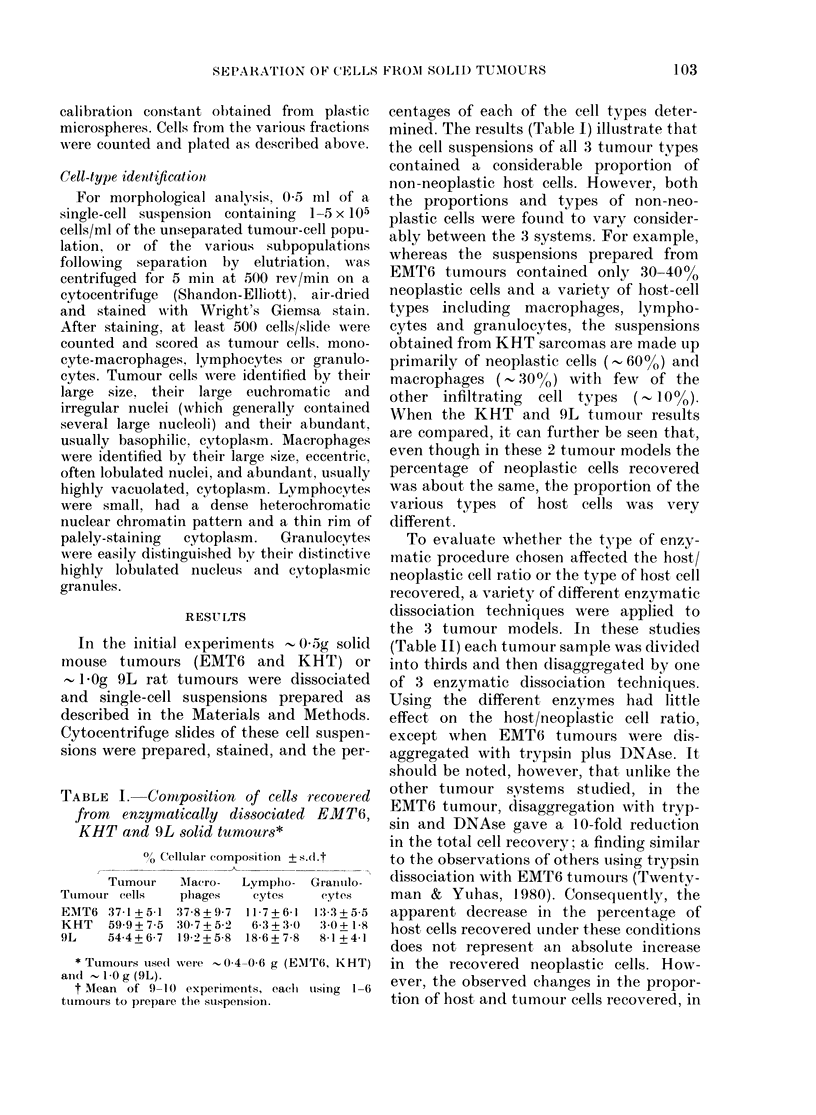
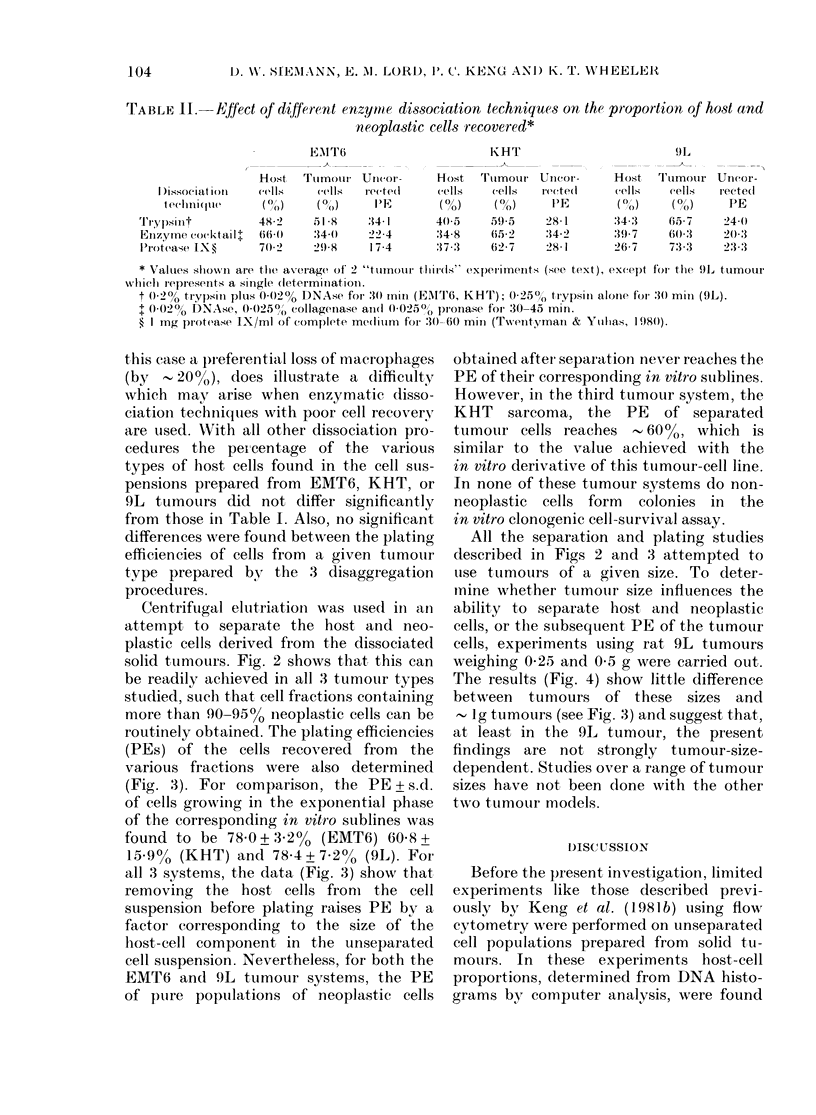

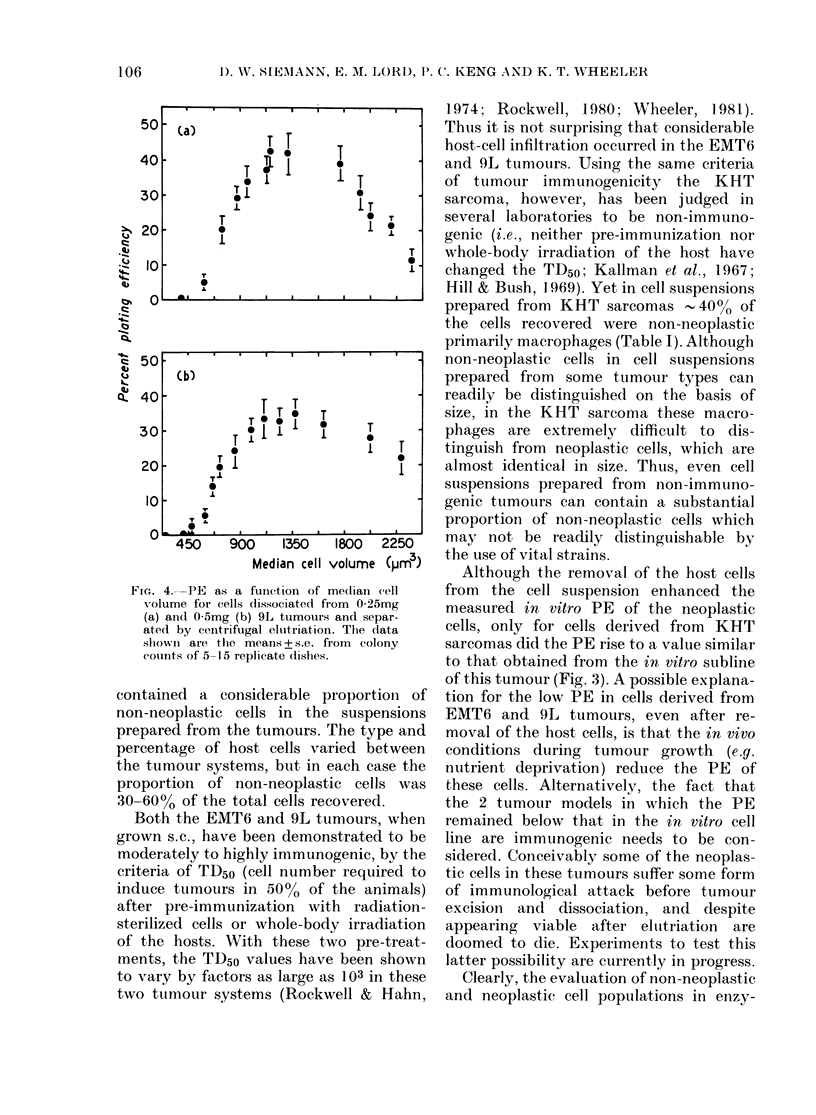

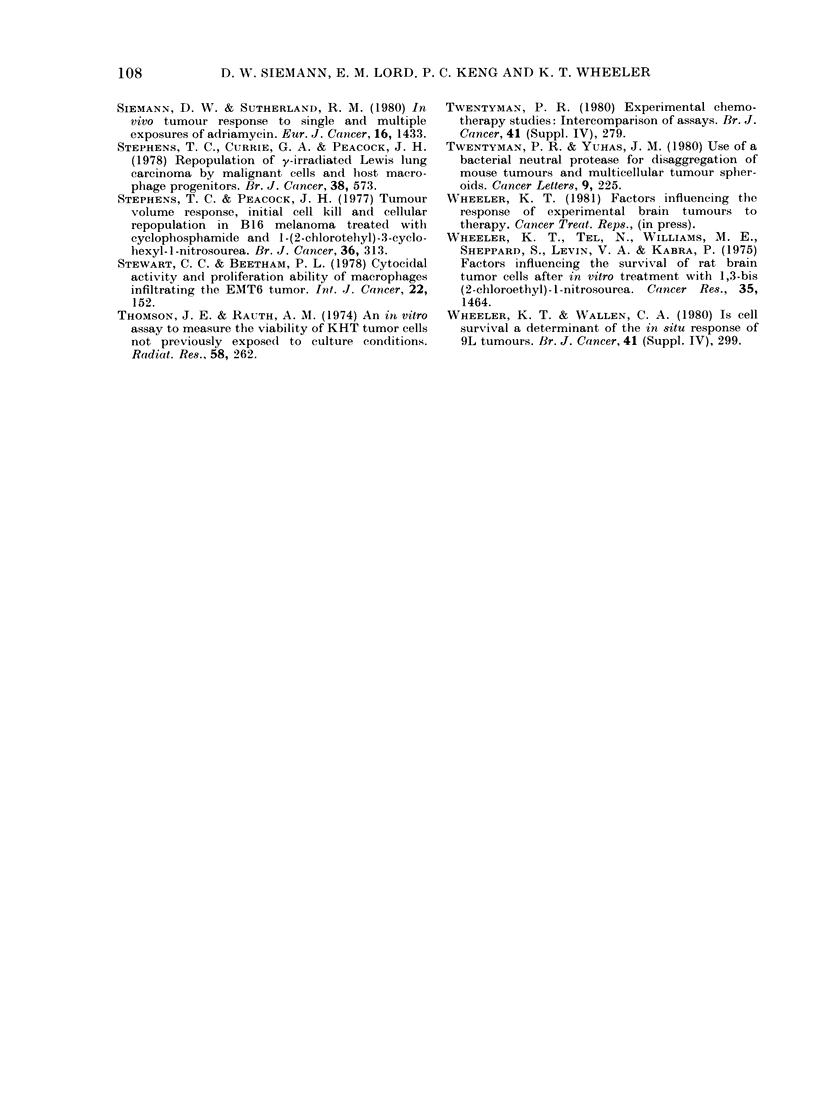
Selected References
These references are in PubMed. This may not be the complete list of references from this article.
- Brown J. M., Yu N. Y., Workman P. Pharmacokinetic considerations in testing hypoxic cell radiosensitizers in mouse tumours. Br J Cancer. 1979 Mar;39(3):310–320. doi: 10.1038/bjc.1979.55. [DOI] [PMC free article] [PubMed] [Google Scholar]
- Evans R. Macrophages in syngeneic animal tumours. Transplantation. 1972 Oct;14(4):468–473. doi: 10.1097/00007890-197210000-00011. [DOI] [PubMed] [Google Scholar]
- Hill R. P. An appraisal of in vivo assays of excised tumours. Br J Cancer Suppl. 1980 Apr;4:230–239. [PMC free article] [PubMed] [Google Scholar]
- Hill R. P., Bush R. S. A lung-colony assay to determine the radiosensitivity of cells of a solid tumour. Int J Radiat Biol Relat Stud Phys Chem Med. 1969 Jul;15(5):435–444. doi: 10.1080/09553006914550721. [DOI] [PubMed] [Google Scholar]
- Kallman R. F., Silini G., Van Putten L. M. Factors influencing the quantitative estimation of the in vivo survival of cells from solid tumors. J Natl Cancer Inst. 1967 Sep;39(3):539–549. [PubMed] [Google Scholar]
- Keng P. C., Li C. K., Wheeler K. T. Characterization of the separation properties of the Beckman elutriator system. Cell Biophys. 1981 Mar;3(1):41–56. doi: 10.1007/BF02782152. [DOI] [PubMed] [Google Scholar]
- Keng P. C., Li C. K., Wheeler K. T. Synchronization of 9L rat brain tumor cells by centrifugal elutriation. Cell Biophys. 1980 Sep;2(3):191–206. doi: 10.1007/BF02790449. [DOI] [PubMed] [Google Scholar]
- Keng P. C., Wheeler K. T. Radiation response of synchronized 9L rat brain tumor cells separated by centrifugal elutriation. Radiat Res. 1980 Sep;83(3):633–643. [PubMed] [Google Scholar]
- Leith J. T., Schilling W. A., Wheeler K. T. Cellular radiosensitivity of a rat brain tumor. Cancer. 1975 Jun;35(6):1545–1550. doi: 10.1002/1097-0142(197506)35:6<1545::aid-cncr2820350611>3.0.co;2-n. [DOI] [PubMed] [Google Scholar]
- Lord E. M. Comparison of in situ and peripheral host immunity to syngeneic tumours employing the multicellular spheroid model. Br J Cancer Suppl. 1980 Apr;4:123–127. [PMC free article] [PubMed] [Google Scholar]
- Meistrich M. L., Meyn R. E., Barlogie B. Synchronization of mouse L-P59 cells by centrifugal elutriation separation. Exp Cell Res. 1977 Mar 1;105(1):169–177. doi: 10.1016/0014-4827(77)90163-x. [DOI] [PubMed] [Google Scholar]
- Rockwell S. C., Kallman R. F., Fajardo L. F. Characteristics of a serially transplanted mouse mammary tumor and its tissue-culture-adapted derivative. J Natl Cancer Inst. 1972 Sep;49(3):735–749. [PubMed] [Google Scholar]
- Rockwell S., Hahn G. M. An assay permitting quantitative comparison of tumor-directed immunity and tumor cell survival. J Natl Cancer Inst. 1974 Nov;53(5):1379–1382. doi: 10.1093/jnci/53.5.1379. [DOI] [PubMed] [Google Scholar]
- Rockwell S. In vivo-in vitro tumor systems: new models for studing the response of tumours to therapy. Lab Anim Sci. 1977 Oct;27(5 Pt 2):831–851. [PubMed] [Google Scholar]
- Rosenblum M. L., Knebel K. D., Wheeler K. T., Barker M., Wilson C. B. Development of an in vitro colony formation assay for the evaluation of in vivo chemotherapy of a rat brain tumor. In Vitro. 1975 Sep-Oct;11(5):264–273. doi: 10.1007/BF02615637. [DOI] [PubMed] [Google Scholar]
- Russell S. W., Doe W. F., Hoskins R. G., Cochrane C. G. Inflammatory cells in solid murine neoplasms. I. Tumor disaggregation and identification of constituent inflammatory cells. Int J Cancer. 1976 Sep 15;18(3):322–330. doi: 10.1002/ijc.2910180309. [DOI] [PubMed] [Google Scholar]
- Schmidek H. H., Nielsen S. L., Schiller A. L., Messer J. Morphological studies of rat brain tumors induced by N-nitrosomethylurea. J Neurosurg. 1971 Mar;34(3):335–340. doi: 10.3171/jns.1971.34.3.0335. [DOI] [PubMed] [Google Scholar]
- Siemann D. W., Sutherland R. M. In vivo tumor response to single and multiple exposures of adriamycin. Eur J Cancer. 1980 Nov;16(11):1433–1440. doi: 10.1016/0014-2964(80)90052-3. [DOI] [PubMed] [Google Scholar]
- Stephens T. C., Currie G. A., Peacock J. H. Repopulation of gamma-irradiated Lewis lung carcinoma by malignant cells and host macrophage progenitors. Br J Cancer. 1978 Nov;38(5):573–582. doi: 10.1038/bjc.1978.252. [DOI] [PMC free article] [PubMed] [Google Scholar]
- Stephens T. C., Peacock J. H. Tumour volume response, initial cell kill and cellular repopulation in B16 melanoma treated with cyclophosphamide and 1-(2-chloroethyl)-3-cyclohexyl-1-nitrosourea. Br J Cancer. 1977 Sep;36(3):313–321. doi: 10.1038/bjc.1977.195. [DOI] [PMC free article] [PubMed] [Google Scholar]
- Stewart C. C., Beetham K. L. Cytocidal activity and proliferative ability of macrophages infiltrating the EMT6 tumor. Int J Cancer. 1978 Aug 15;22(2):152–159. doi: 10.1002/ijc.2910220208. [DOI] [PubMed] [Google Scholar]
- Thomson J. E., Rauth A. M. An in vitro assay to measure the viability of KHT tumor cells not previously exposed to culture conditions. Radiat Res. 1974 May;58(2):262–276. [PubMed] [Google Scholar]
- Twentyman P. R. Experimental chemotherapy studies: intercomparison of assays. Br J Cancer Suppl. 1980 Apr;4:279–287. [PMC free article] [PubMed] [Google Scholar]
- Twentyman P. R., Yuhas J. M. Use of bacterial neutral protease for disaggregation of mouse tumours and multicellular tumor spheroids. Cancer Lett. 1980 May;9(3):225–228. doi: 10.1016/0304-3835(80)90091-9. [DOI] [PubMed] [Google Scholar]
- Wheeler K. T., Tel N., Williams M. E., Sheppard S., Levin V. A., Kabra P. M. Factors influencing the survival of rat brain tumor cells after in vitro treatment with 1,3-bis(2-chloroethyl)-1-nitrosourea. Cancer Res. 1975 Jun;35(6):1464–1469. [PubMed] [Google Scholar]
- Wheeler K. T., Wallen C. A. Is cell survival a determinant of the in situ response of 9L tumours? Br J Cancer Suppl. 1980 Apr;4:299–303. [PMC free article] [PubMed] [Google Scholar]


